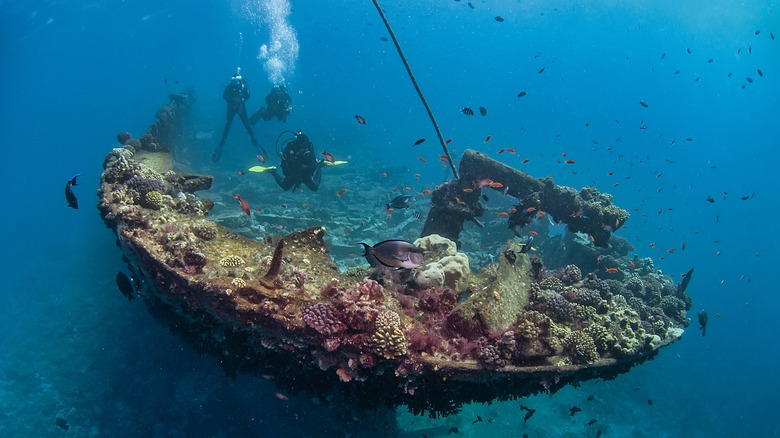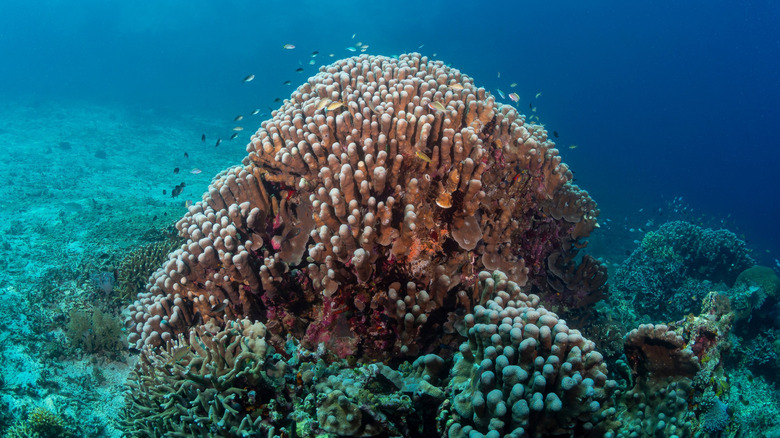The Impressive Scientific Discovery Once Mistaken For A Shipwreck
The number of wondrous features in the ocean is ever growing, with only 26% of the Earth's seafloor being mapped as of June 2024. We can see some of these from an aerial view and even from space, such as Australia's Great Barrier Reef ecosystem and East Africa's strange underwater waterfall phenomenon. NASA satellites can see shipwrecks, too, but one of them has actually turned out to be a giant coral.
During an expedition in Honiara, Solomon Islands (a Southwest Pacific Ocean archipelago), by the National Geographic Society's Pristine Seas team in October 2024, scientists came across what appeared to be a shipwreck from the surface because of its size. When they dove down to take a closer look, though, they saw Earth's largest coral colony, which they measured at about 5.5 meters (18 feet) high, 32 meters (105 feet) long, 34 meters (111.5 feet) wide, and 183 meters (600 feet) around. By comparison, it's equal in size to about five tennis courts and longer than the biggest animal in the world, the blue whale.
The huge coral is located in the Coral Triangle region (so named because of its coral variety) of the Three Sisters group of islands, nearly 13 meters (42 feet) underwater. This specific organism is not a coral reef because it only consists of one coral species, Pavona clavus, rather than multiple species. Instead, it's a standalone, intricate colony of billions of identical coral polyps that researchers believe has been growing for 300 to 500 years and is in excellent health. The massive living specimen is mostly brown with spots of blues, pinks, reds, and yellows here and there.
The importance of Pavona clavus and coral reefs
The Pavona clavus, like many other species of coral, is a haven for sea life. Its dome-like shelter is a home and breeding ground for crab, shrimp, juvenile fish, and other invertebrates that residents in the area rely on for food. Also, plants in a coral reef turn the carbon dioxide that the ocean absorbs into oxygen. Without enough of these plants, the pH of the water becomes more acidic — thanks to increased levels of carbonic acid – which is eating away at the coral.
According to a 2024 collaborative study, at least 30% of the ocean needs safeguarding to maintain a healthy balance, which requires about 190,000 small marine protected areas in coastal environments, while more remote regions need about 300 large marine protected areas. However, as of late 2024, only 8.2% of the ocean is protected. In a National Geographic Society press release, coral scientist for the Pristine Seas expedition Eric Brown did provide some good news, noting that large colonies of coral like the one in the Solomon Islands have high reproductive potential, which helps damaged coral reef ecosystems recover.
Additionally, the Solomon Islands Ministry of Fisheries and Marine Resources' Fisheries officer Ronnie Posala said, "For the people of the Solomon Islands, this mega coral discovery is monumental. It reinforces the importance of our ocean, which sustains our communities, traditions, and future. Such discoveries remind us of our duty to safeguard these natural wonders, not only for their ecological value but for the livelihoods and cultural identity they provide."

